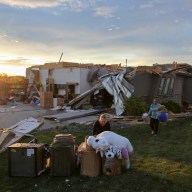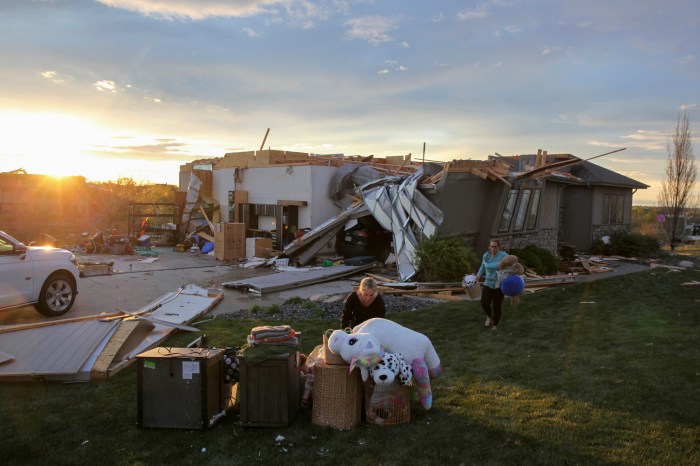HOUSTON – Two astronauts floated outside the International Space Station on Sunday and finished two of the maintenance tasks on their work list during the final spacewalk of the space shuttle Discovery’s visit to the orbiting outpost.
Shuttle astronauts Michael Fossum and Ronald Garan Jr. finished the first and primary task of their excursion: replacing an empty nitrogen tank. Nitrogen gas is used to push ammonia through the station’s main cooling system.
After the tank replacement, Fossum completed an extra task he had been given, collecting debris from a solar power wing’s rotating joint.
Later in the spacewalk, they planned to remove insulation from wrist and elbow cameras on the robotic arm of the space station’s newest room, the $1 billion Japanese lab named Kibo, as well as reinstalling a television camera that had a faulty power unit replaced.
The spacewalk, the third of the mission, began about 30 minutes ahead of schedule.
During the nitrogen tank replacement, Garan went on the ride of his life. While holding the old tank, he was attached to the end of the space station’s robotic arm and was swung from the right side of the complex to the left. He was about 24 metres above the station during the manoeuvre. After getting the new tank, he was swung back to the right side, where he installed it.
“It’s a lot different with the planet down there,” Garan said as he made the trip back with the new tank. The view from his helmet camera showed the space station with the Earth in the background.
“Isn’t it a great view?” Fossum said.
“Unbelievable,” Garan said as the space station’s orbit carried them over Peru. “Beautiful.”
In his extra task, Fossum collected samples of small amounts of dust-like debris detected on a solar wing rotating joint on the space station’s left side.
Engineers will analyze the debris to see if the material can help them figure out why a similar joint on the right side of the station was clogged with metal shavings.
That clogged joint on the right side of the station has been used only sparingly since last fall, hampering generation of electricity. The joints enable the space station’s solar power arrays to rotate and track the sun.
The left side joint is working normally and engineers are trying to prevent it from developing similar problems. Fossum said he wasn’t worried about the joint.
It “looks to be in pretty darn good shape,” he said.
On Saturday, Discovery crew members Akihiko Hoshide and Karen Nyberg moved Kibo’s robotic arm for the first time, slightly manoeuvring two of its six joints.
Full deployment of the 10-metre arm will be done after Discovery leaves the station next week. However, it won’t be used for any actual work until after the launch into orbit next year of the lab’s third and final section – a “porch” for exterior experiments – and a second, smaller robotic arm.
Japanese Prime Minister Yasuo Fukuda spoke to Hoshide and Discovery commander Mark Kelly and congratulated them on Kibo’s successful installation.
Kibo, Japanese for hope, was delivered by the shuttle and installed on the space station last week.
Also Saturday, several thermal protective panels on Discovery’s right wing that the astronauts had photographed because of some slight pulses in their embedded sensors were given the “all clear,” said flight director Annette Hasbrook.
The wing sensors are one of NASA’s many safety measures put in place after Columbia was destroyed during re-entry in 2003 as a result of a gashed wing.
–
On the Net:


















